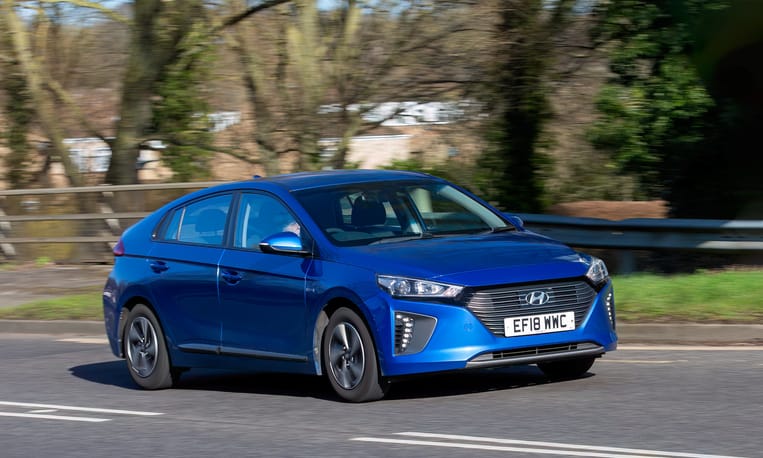Debunked: The Hyundai Ioniq Electric Plus You Never Knew Existed

The Hyundai Ioniq nameplate has become synonymous with innovation in the electric vehicle (EV) market. However, there's a little-known member of the Ioniq family – the Ioniq Electric Plus – that might surprise you. Launched in 2019, this car offered a unique proposition, but its brief existence makes it a bit of a forgotten gem. Let's delve into the Hyundai Ioniq Electric Plus, explore its features, and see how it laid the groundwork for Hyundai's future EVs.
A Bridge Between Worlds: Electric Efficiency with Gas-Powered Security
The Hyundai Ioniq Electric Plus wasn't a pure electric vehicle like the standard Ioniq Electric or the current Ioniq 5 and Ioniq 6. Instead, it was a plug-in hybrid (PHEV) designed to bridge the gap between electric driving and gas-powered security.

The Ioniq Electric Plus packed a lithium-ion battery that provided an electric-only range of over 40 kilometers (around 25 miles). This allowed for emission-free commutes and errands, perfect for eco-conscious drivers with predictable daily routines. But here's where it differed from a pure EV: the Ioniq Electric Plus also had a gasoline engine.
This gasoline engine meant that range anxiety, a common concern for EV drivers, was significantly reduced. If your electric range ran out, the gasoline engine seamlessly kicked in, ensuring you weren't stranded. This flexibility made the Ioniq Electric Plus an attractive option for those who wanted to experience the benefits of electric driving without completely committing to an EV lifestyle.
Features and Technology: A Glimpse into the Future
While the Ioniq Electric Plus might not have been a sales juggernaut, it did boast some impressive features that foreshadowed the technology we see in Hyundai's current EVs.
- Regenerative Braking: This system captured energy during braking and deceleration, feeding it back into the battery to extend electric range. This feature is now a staple in Hyundai's electric lineup.
- Driver-Focused Interior: The cabin offered a comfortable and well-equipped environment with a focus on driver ergonomics. This emphasis on driver comfort is evident in Hyundai's current EVs like the Ioniq 5.

- Advanced Safety Features: The Ioniq Electric Plus came equipped with a suite of advanced driver-assistance systems (ADAS) like automatic emergency braking and lane departure warning. These features are now widely available on Hyundai's entire vehicle portfolio.
Why Did the Ioniq Electric Plus Disappear?
The Ioniq Electric Plus had a short lifespan, lasting only a year in some markets. There are a couple of possible explanations for this:
- Market Timing: The PHEV market was still in its early stages in 2019. Consumers might not have been fully ready to embrace PHEVs, especially with the rising popularity of pure EVs.
- Shifting Priorities: With advancements in battery technology and increasing consumer confidence in EVs, Hyundai may have decided to focus its efforts on developing fully electric vehicles like the Ioniq 5 and Ioniq 6.
Legacy: A Stepping Stone to Electrification
Despite its short tenure, the Ioniq Electric Plus played a significant role in Hyundai's electric vehicle journey. It served as a stepping stone, introducing drivers to the concept of electric mobility while mitigating range anxiety through the gasoline engine. The features and technology introduced in the Ioniq Electric Plus paved the way for the development of Hyundai's current crop of successful EVs.

The Ioniq Electric Plus: A Brief Chapter in a Larger Story
The Hyundai Ioniq Electric Plus might not be a household name, but its existence holds value in Hyundai's electrification story. It introduced PHEVs to a wider audience, showcased innovative features, and ultimately helped pave the way for the success of Hyundai's current EVs. While the Ioniq Electric Plus itself may be gone, its legacy lives on in the form of the Ioniq 5 and Ioniq 6, two EVs that are leading the charge in a new era of electric mobility.
